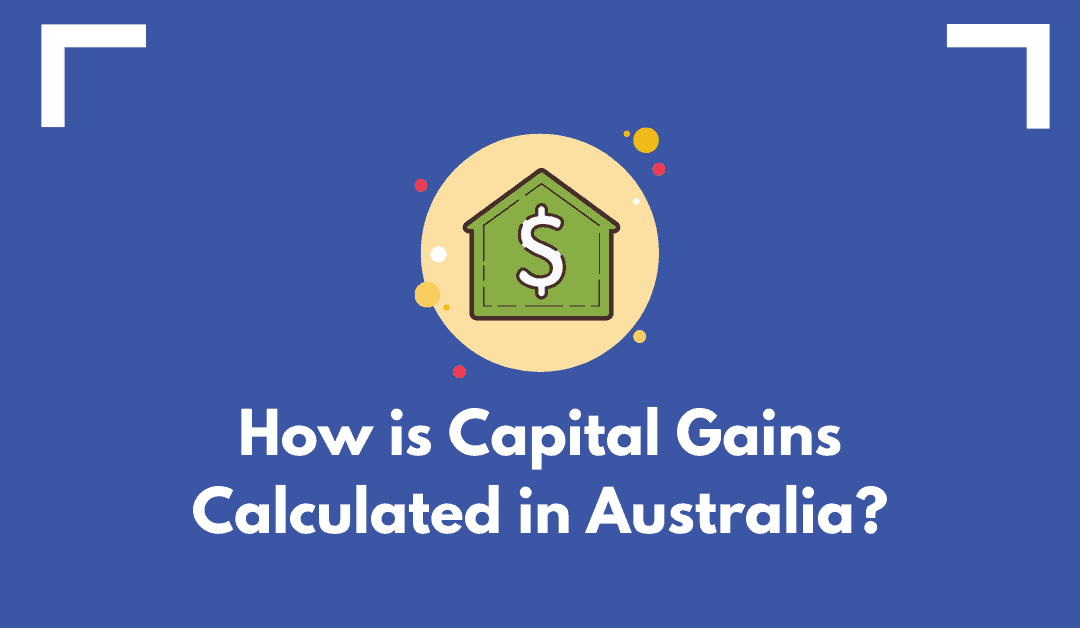
BY
|
3 Simple Methods: How To Calculate Capital Gains Tax (And Concessions You Can Take Advantage Of!)
Understanding how to calculate capital gains tax is incredibly useful in all stages of owning an asset whether it’s looking to purchase and disposing an asset and figuring out how long you are looking to hold onto the asset for. This because capital gains tax calculations factor in many of these factors to determine if and how much you should be paying at the time a capital gains tax event occurs.
This article will help you understand exactly what constitutes a capital gains tax event and how capital gains tax is calculated.
What is Capital Gains Tax?
First, it’s essential to understand what exactly constitutes capital gains tax – capital gains tax refers to a levy you pay that is calculated based on the difference between what it costed to acquire an asset and what you had received when you disposed of it.
A capital gains tax can apply to several types of assets but most commonly applies in real estate, shares, business investments and personal use assets above a specific value. Some exemptions do apply in certain situations.
When you make a capital gain, the proceeds are then added to your total assessable income and could significantly increase the tax you need to pay when you complete your tax return.
If you make a capital loss, this cannot be used to offset your assessable income. Instead, the loss can be used to reduce future capital gains.
Note – individuals and businesses are eligible for a 50% discount on capital gains tax if they have held the asset for more than 12 months.
How is Capital Gains Tax Calculated?
To calculate capital gains tax, there are three primary methods for calculating capital gains tax:
- CGT discount method
- Indexation method
- The “other method.”
Generally, capital gains or losses are calculated when you work out your cost base (this is what you’ve paid to acquire, hold and dispose of it) and subtract it from your capital proceeds.
You might also be interested in our article on 7 Scenarios That Affect Your Main Residence CGT Exemption
Discount Method
This method applies if the individual or business has held the asset for more than 12 months and you’re eligible for the 50% discount. However, this is not available to companies or foreign individual residents. Complying super funds and eligible life insurance companies can access a 33.33% discount.
To calculate capital gains tax, subtract the cost base from the capital proceeds, deduct any capital losses made, then apply the relevant discount percentage:
Capital Gains Calculation
Asset Sale Price – Cost Base = Capital Proceeds
Capital Gains Discount Calculation for Individuals
Capital Proceeds x 50% = Capital Gain
Example:
Barry, an Australian resident, buys a house and holds it for 20 months before selling it and making a profit of $25,000. He has no capital losses. Using the discount method, he will declare a capital gain of $12,500.
To find out more about the discount method, visit this relevant ATO page.
Indexation Method
The indexation method applies to assets that are generally acquired and held for a significant period.
As a result, inflation will have a material impact on the cost base of the asset. To be able to use the indexation method, the asset must be acquired before 11.45 am (ACT time) on 21 September 1999 and held for 12 months or more before the relevant CGT event. You can choose to either use this method or the discount method to calculate capital gains tax.
To calculate capital gains tax using the indexation method, an indexation factor is applied to each element of your cost base. The indexation factor is worked out using the Consumer Price Index (CPI):
Calculation of Indexation Factor
CPI for Quarter of CGT Event ÷ CPI for Quarter when Expenditure Occurred = Indexation Factor
Capital Gains Indexation Calculation for Individuals
Capital Proceeds x Indexation Factor = Capital Gain
To find historical CPI data, click here.
Note: expenditure is indexed at the date it was incurred rather than what it is paid. To find out more about the indexation method, visit this relevant ATO page.
The ATO offers a capital gain or loss worksheet that can be used to calculate both methods to see which outcome is better.
Other Method
It’s not certain why the ATO calls this the ‘other’ method, but this is when the eligibility requirements of the discount method or indexation method do not fit your situation. Often, this applies to assets that are sold within 12 months of acquiring it. In such a case, you are generally not eligible for any discounts on CGT. Therefore, this method follows the following structure to calculate capital gains:
Asset Sale Price – Cost Base = Capital Proceeds
Example:
Georgina purchased a property for $300,000 under a contract dated 10 May 2019. The contract provided for payment of a deposit of $25,000 on that date, with the balance of $275,000 to be paid on the settlement on 1 August 2019.
Georgina also paid stamp duty of $7,000 on 12 July 2019. On 1 August 2019, she received a bill for the solicitor’s fees of $3,000 which was paid together with the settlement.
Georgina subsequently sold the property on 30 October 2011 (the day contracts were exchanged) for $380,000. During the disposal process, she incurred costs of $1,700 in solicitor’s fees and $3,000 in real estate agent’s commission.
| Deposit | $25,000 |
| Balance | $275,000 |
| Stamp duty | $7,000 |
| Solicitors fees for the purchase of property | $3,000 |
| Solicitors fees for the sale of property | $1,700 |
| Agent’s commission | $3,000 |
| Cost base (total) | $314,700 |
Given Georgina purchased and sold her property within 12 months, she must use the ‘other’ method to calculate her capital gain. To calculate her capital gains:
| Sale price | $380,000 |
| minus cost base | $314,700 |
| Capital gain calculated using the ”other” method | $65,300 |
Assuming that Georgina has made no further capital gains or losses within the same financial year and has no unapplied capital losses, the net capital using the other method of $65,300 will be included in her tax return as part of her assessable income.
Are there any capital gains tax exemptions for small businesses?
There are a few capital gains tax exemptions and concessions that are offered by the ATO for small businesses but must fit specific eligibility criteria to qualify. There are four common conditions for all the concessions offered that small businesses must meet:
- You are a small business entity with an aggregated turnover of less than $2 million
- The asset that is being assessed must satisfy the active asset test
- Additional conditions must be met if the asset is a share in a company or an interest in a trust
- The right or interest must be a membership interest of the entity in the partnership.
Small Business 15-Year Exemption
If your business has actively and continuously owned an asset for at least 15 years and you’re aged 55 or over and are retiring or permanently incapacitated, you would be eligible for capital gains tax exemption.
Small Business 50% Active Asset Reduction
You can access an additional 50% discount in addition to the 50% CGT discount of owning the asset for more than 12 months. There are no further conditions beyond the basic common conditions.
Small Business Retirement Capital Gains Tax Exemption
You can choose to disregard all or part of a capital gain up to a lifetime limit of $500,000 if you meet the basic common conditions above and keep a written record of the amount you chose to disregard. If you’re under the age of 55, the exempt amount must be paid into a superannuation fund, or retirement savings account to be eligible for the capital gains tax exemption.
Small Business Rollover
If your business sells an asset that’s in current use, you can delay all or part of a capital gain for two years or potentially longer if you replace the asset or you incur expense on improving the current asset to maintain use.
You don’t have to include the capital gain in your assessable income until a change in your circumstances causes a CGT event to occur. To find out more, visit the ATO website.
Key Takeaways
So, the best method on how to calculate capital gains tax?
Much of this has to do with your personal situation and which method you use to calculate capital gains tax is most suited to this to get the best financial outcome to reduce your tax liability. While it may not always be avoidable, but having the knowledge and awareness of potential capital gains tax exemptions can help potential asset purchases and disposals to be much more tax-efficient with careful tax planning ahead of time.
Consulting an accountant can significantly help reduce capital gains tax by relying on their expertise in navigating more complicated situations. To find out how Box Advisory Services can help you, you can book in a free consultation with us or call us to discuss your CGT matter further.
Sign up to our monthly newsletter where we share exclusive small business and contractor advice!
Disclaimer:
Please note that every effort has been made to ensure that the information provided in this guide is accurate. You should note, however, that the information is intended as a guide only, providing an overview of general information available to contractors and small businesses. This guide is not intended to be an exhaustive source of information and should not be seen to constitute legal or tax advice. You should, where necessary, seek a second professional opinion for any legal or tax issues raised in your business affairs.



